A sweet, good-hearted, intelligent princess, but also strong-willed and determined: this is how we must imagine, at least according to the accounts of her contemporaries, the temperament of Elisabetta Farnese (Parma, 1692 - Aranjuez, 1766), princess of Parma and Piacenza whose story might recall that of a fairy tale, since she, the young heiress of the family that ruled a duchy of small size (but very relevant from a strategic point of view), succeeded to become, thanks to her manners, ambition, intelligence, and the shrewd marriage policies of her family, queen consort of Spain as the wife of Philip V (Versailles, 1683 - Madrid, 1746), who had become king of Spain in 1700. It was the Piacenza abbot Giulio Alberoni (Piacenza, 1664 - 1752) who had introduced her to the Spanish court as “a good Lombard, without gall, all heart, of a sweet and manageable natural genius.” And indeed it took all the excellent diplomatic skills of the wily cardinal to convince the Bourbons to arrange a marriage with the young Elisabeth.
The affair, at the center of the exhibition I Fasti di Elisabetta Farnese. Portrait of a Queen (Piacenza, Civic Museums of Palazzo Farnese, Dec. 2, 2023 to April 7, 2024), revolves around the figures of Elisabeth Farnese, Cardinal Alberoni and the princess’s parents, namely Dorothea Sophia of Ne uburg (Neuburg an der Donau, 1670 - Parma, 1748) and her adoptive father Francesco Farnese, (Parma, 1678 - Piacenza, 1727) who had married his sister-in-law, widowed by his brother Odoardo II Farnese, Elisabetta’s father, when the little girl was only a year old. Everything happened in the space of a few months: in February 1714, Philip V of Spain was only thirty-one years old when he lost his first wife, Marie Louise of Savoy (Turin, 1688 - Madrid, 1714), five years his junior, who died of tuberculosis shortly after turning just twenty-five. The problem then arises of finding a new wife for the king of Spain, and in this operation Cardinal Alberoni, as anticipated, plays a key role. Elisabeth is already twenty-two years old, an age considered, by the standards of the time, already quite high for a young woman to be married off: her parents, in fact, despite the prospect of engaging in negotiations to marry off their already very young daughter (Francis and Dorothea had begun to negotiate Elisabeth’s future husband as early as 1706: the likes of Vittorio Amedeo of Savoy and Francesco d’Este, crown prince of Modena, had asked for her hand, but no proposal would go through), they had preferred to wait because the War of the Spanish Succession was being fought in those years and a rash decision, with the war not yet over, or at any rate without clear horizons looming, could have done irreparable damage to the small but important and wealthy duchy. The disappearance of Marie Louise changes everything, and offers Francis and Dorothea the opportunity to obtain for Elizabeth an otherwise unhoped-for marriage. And above all, extremely prestigious.
The parents had thought of everything and ensured that Elisabeth had an education worthy of an important sovereign. And the girl had proved interested, intelligent, passionate, receptive. She knew Latin and several foreign languages (German, French, later she would also learn Spanish), she studied literature, philosophy and history, subjects that did not, however, attract her all that much, since she was more versed in the arts, particularly music and dance, and she also practiced painting (we are also left with some of her paintings): all gifts that made Elisabeth particularly attractive to a potential husband. And it is as a refined princess that she appears to us in a portrait in which she is depicted at the age of fourteen by Giovanni Maria delle Piane known as il Mulinaretto (Genoa, 1660 - Monticelli d’Ongina, 1745), a work in which Elisabeth, slim, taken diagonally dressed in a blue velvet dress edged with ermine (and with a few pink ribbons fastened to her shoulders according to the French fashion of the time), her slender face framed by her blond hair, is shown as a confident, elegant, well-behaved little girl. The work dates from 1706, the year when Elizabeth’s parents (both moreover portrayed by Mulinaretto himself) had begun discussing a possible marriage for their heir.
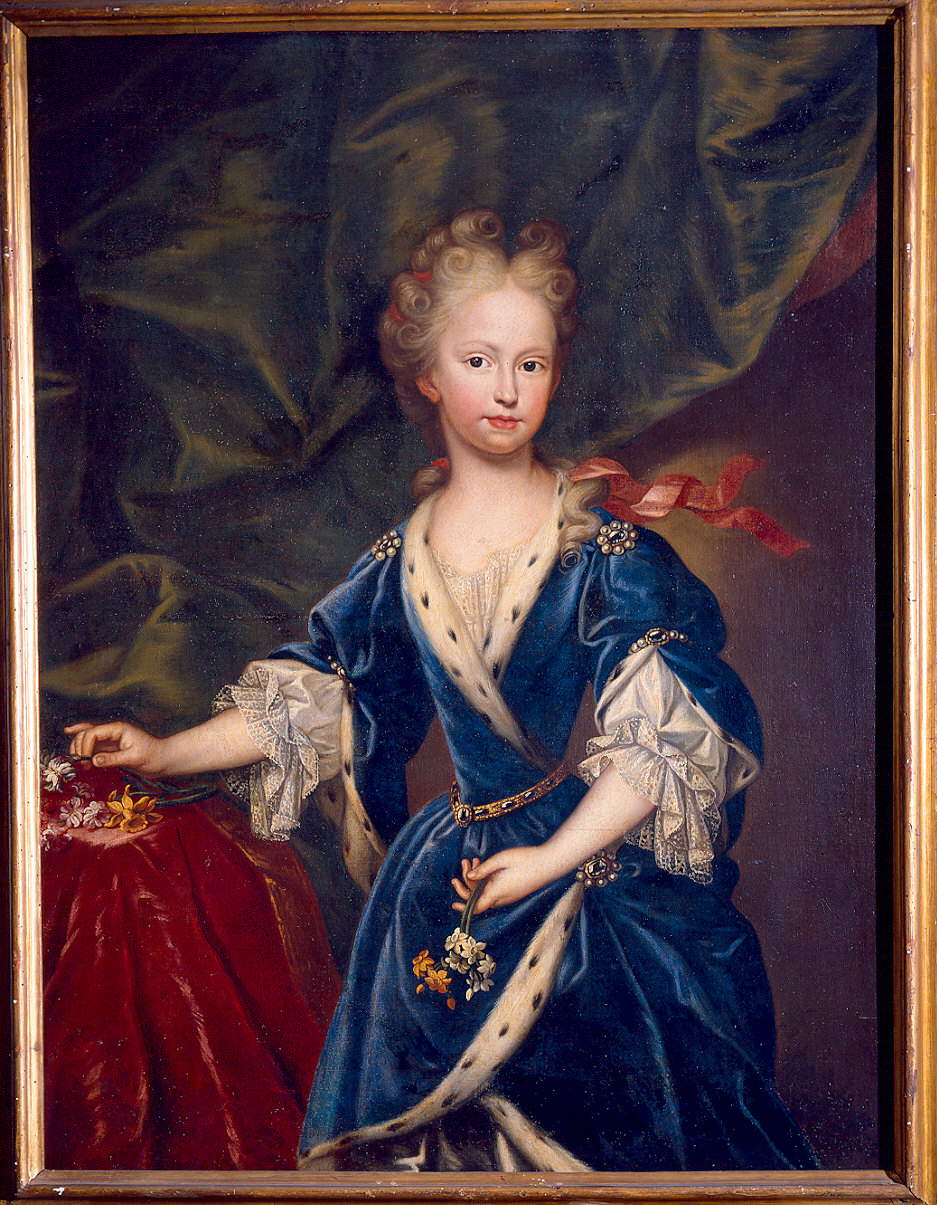

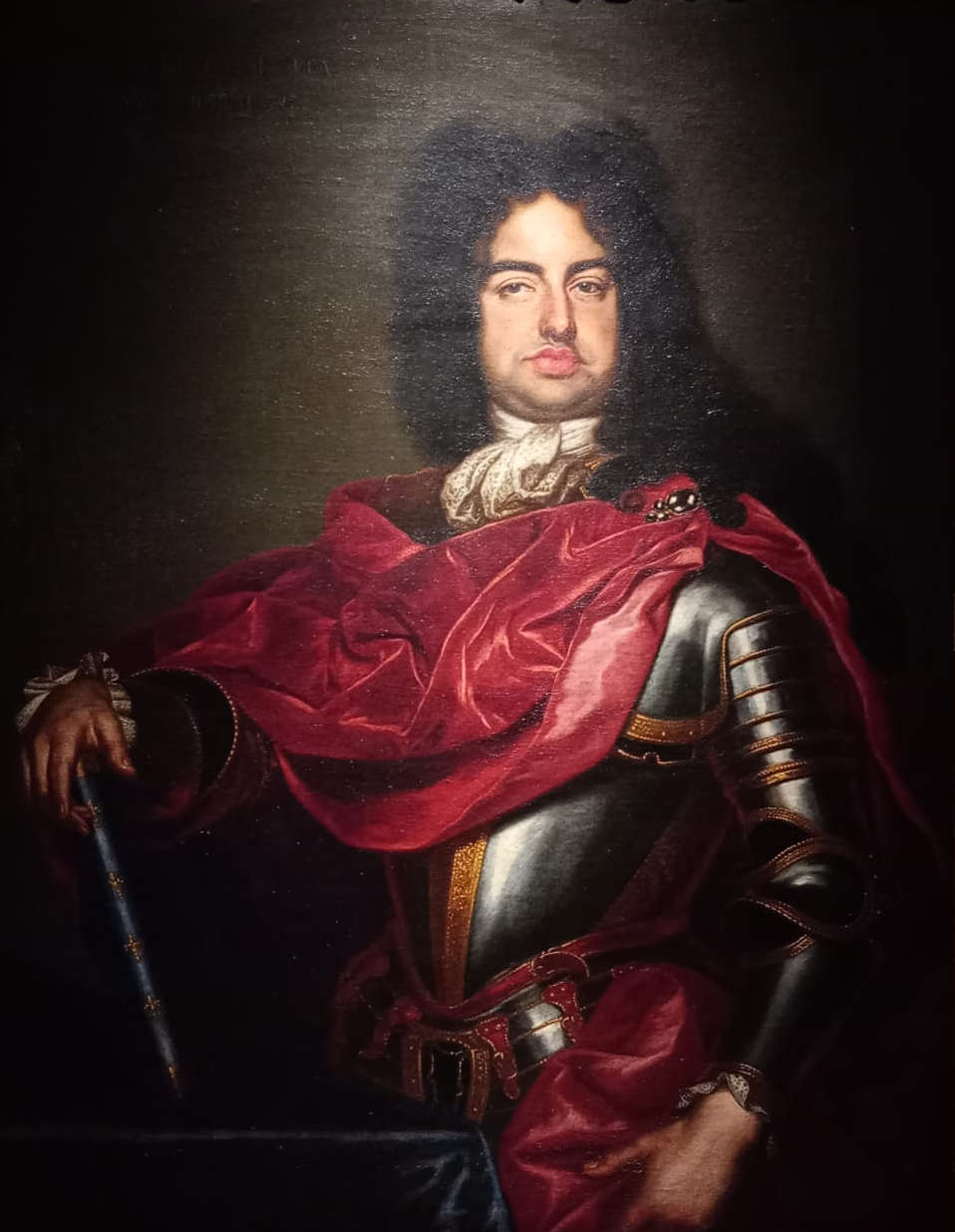
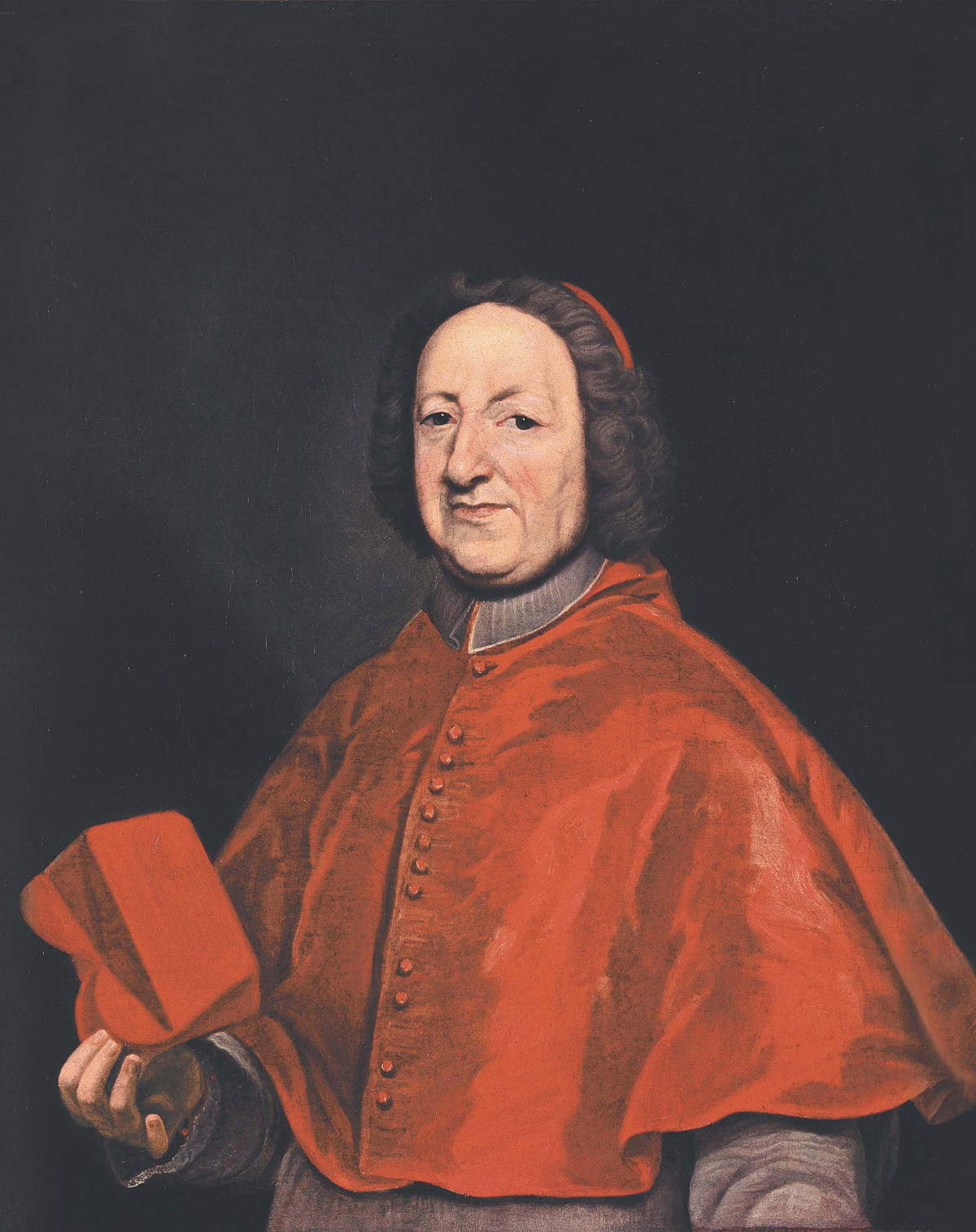
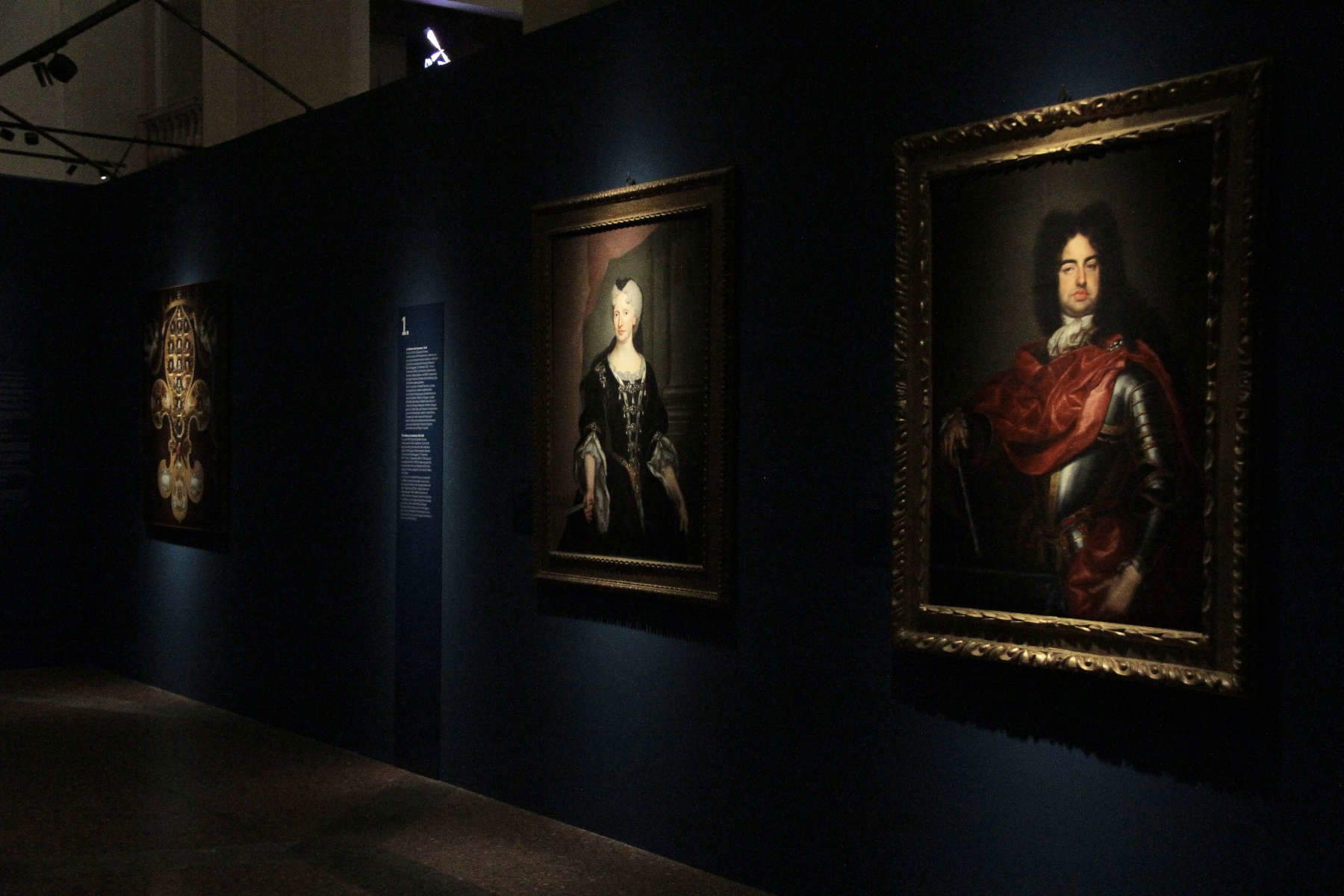
In order to be married to the king of Spain, the young princess must overcome other outstanding candidates from half of Europe: decisive, therefore, is the persuasive operation of Cardinal Alberoni, the real director of the whole operation, who on the one hand succeeds in overcoming the resistance of Anna de la Tremouille, the 70-year-old Orsini princess who was first lady of the late Marie Louise of Savoy (her cooperation was necessary for the success of the marriage), and on the other hand is successful in convincing the Spanish court that Elisabeth is the ideal woman for Philip V. In fact, the prelate had described Elizabeth as a simple, calm, submissive woman, qualities that were considered, again by the mentality of the time, important for a queen: she was preferred to be compliant so as not to have any trouble in the government of the kingdom. Elizabeth is in fact the exact opposite of how the cardinal had presented her, and Alberoni himself, on December 31, 1714, thus the same year as the wedding, is said to have described Elizabeth as “consummate in the finer arts of reigning” and “shrewd as a gypsy” to one of his correspondents, Count Ignazio Rocca. Energetic, resolute, ready to stand up to the intrusive Princess Orsini, able to have some influence on her husband’s choices. “As queen,” writes scholar Antonella Diana, “she knew how to reconcile the interests of the Spanish Crown with her own, and through an international diplomatic policy, she secured for her sons Charles and Philip, part of the territories in the Italian peninsula: the Kingdom of Naples and the Duchy of Parma and Piacenza.” And having to cope with “a husband of introverted character and prone to depression,” argues Giulio Sodano, “she enlivened the court of Madrid with gracefulness and playfulness, and became an example for other European courts, where women, diluting the hieraticism of the sovereign consorts, showed the more paternalistic (indeed, maternalistic) face of the monarchy. It was precisely in this dimension that the relevance of informal female power increased.” Indeed, we can identify in Elizabeth Farnese a sovereign who would spend herself to increase the specific weight of women in the Spanish court.
The marriage negotiations with Philip V were thus resolved in a short time. On August 7, 1714, Pope Clement XI appointed Cardinal Ulisse Giuseppe Gozzadini, of Bologna, legate at the court of Parma with the task of celebrating the wedding, which took place by proxy, that is, in the absence of her husband, who was represented in Parma by Cardinal Francesco Acquaviva of Aragon, apostolic nuncio to Spain. The wedding was celebrated on September 16, 1714, and shortly afterwards Elisabeth was already on her way to join her husband in Madrid: the whole enterprise is retraced by the Fasti di Elisabetta, the cycle of paintings commissioned from Ilario Mercanti known as lo Spolverini that retrace all the steps of the wedding, almost like a live chronicle. “Arriving on Spanish soil, Elisabeth, determined, full of the strong and independent spirit transmitted to her by her mother Dorothea Sophia of Neuburg,” writes Marinela Pigozzi, “was not slow to get rid of the Orsini, bringing back to her sole person the ’exercise of power, managing to make herself sovereign in the heart and mind of the king, and proving herself a wife suited to the political and dynastic needs of the court, soon aware of the infinite nuances of the ambiguities of power. Young, graceful, gallant, she knew how to make herself lovable. Rich in a sense of expediency, intuition, she soon proved able to fit in perfectly with her new interlocutors. Her education rich in multifaceted experiences with immediate spin-offs in the field of art and later patronage helped her.” For Elizabeth, then, it is apotheosis: the princess of a small duchy in northern Italy becomes queen of one of the greatest world powers of the time, and in the politics of her reign she will play a most prominent role. An ending, as mentioned, like a fairy tale.
A number of important portraits of Elisabetta Farnese remain from those years. A portrait, still painted by Mulinaretto (who became painter to the court of Parma in 1709), is preserved at the Palace of Caserta; it dates from the period of the marriage (it is 1714-1715) and is one of the most expressive images of Elisabeth before she became queen. The princess is portrayed three-quarter-length, half-length, with a lively gaze turned toward the viewer, capable of conveying all her curiosity, confidence, and intelligence. Her face, candid, almost pale, bears no signs of the smallpox that Elizabeth had contracted very young and disfigured her face. She is clad in a rich robe of golden brocade, rendered by Mulinaretto with supreme attention to detail, and wrapped in a cloak of iridescent blue velvet, lined with ermine. Note that the future queen wears no jewelry (not even on her hand, which is brought toward the blue ribbon adorning her chest, with the intention of unfastening it, a device to give movement to the effigy of the young woman): it is a sign of sobriety. There is no lack, however, next to her, on the right, of a crown as a sign of power: we must therefore imagine her already queen of Spain, or about to become one. A similar portrait, derived from Mulinaretto’s prototype, is preserved at the Pilotta in Parma, but there are still several replicas of this painting, which was probably executed immediately after the wedding. Perhaps it was commissioned from the Genoese painter as early as after Elisabeth had moved to Spain, but we do not know for sure.
![Giovanni Maria delle Piane known as il Mulinaretto, Portrait of Elisabetta Farnese (1714-1715; oil on canvas, 101.7 x 85 cm; Reggia di Caserta, inv. no. 318 [1874]; no. 464 [1905]; no. 1029 [1951-52]; no. 888 [1977-78], Farnese Collection, Farnese Fasti Series, wedding of Elisabetta Farnese and Philip V) Giovanni Maria delle Piane known as il Mulinaretto, Portrait of Elisabetta Farnese (1714-1715; oil on canvas, 101.7 x 85 cm; Reggia di Caserta, inv. no. 318 [1874]; no. 464 [1905]; no. 1029 [1951-52]; no. 888 [1977-78], Farnese Collection, Farnese Fasti Series, wedding of Elisabetta Farnese and Philip V)](https://cdn.finestresullarte.info/rivista/immagini/2024/2561/mulinaretto-ritratto-elisabetta-farnese.jpg)
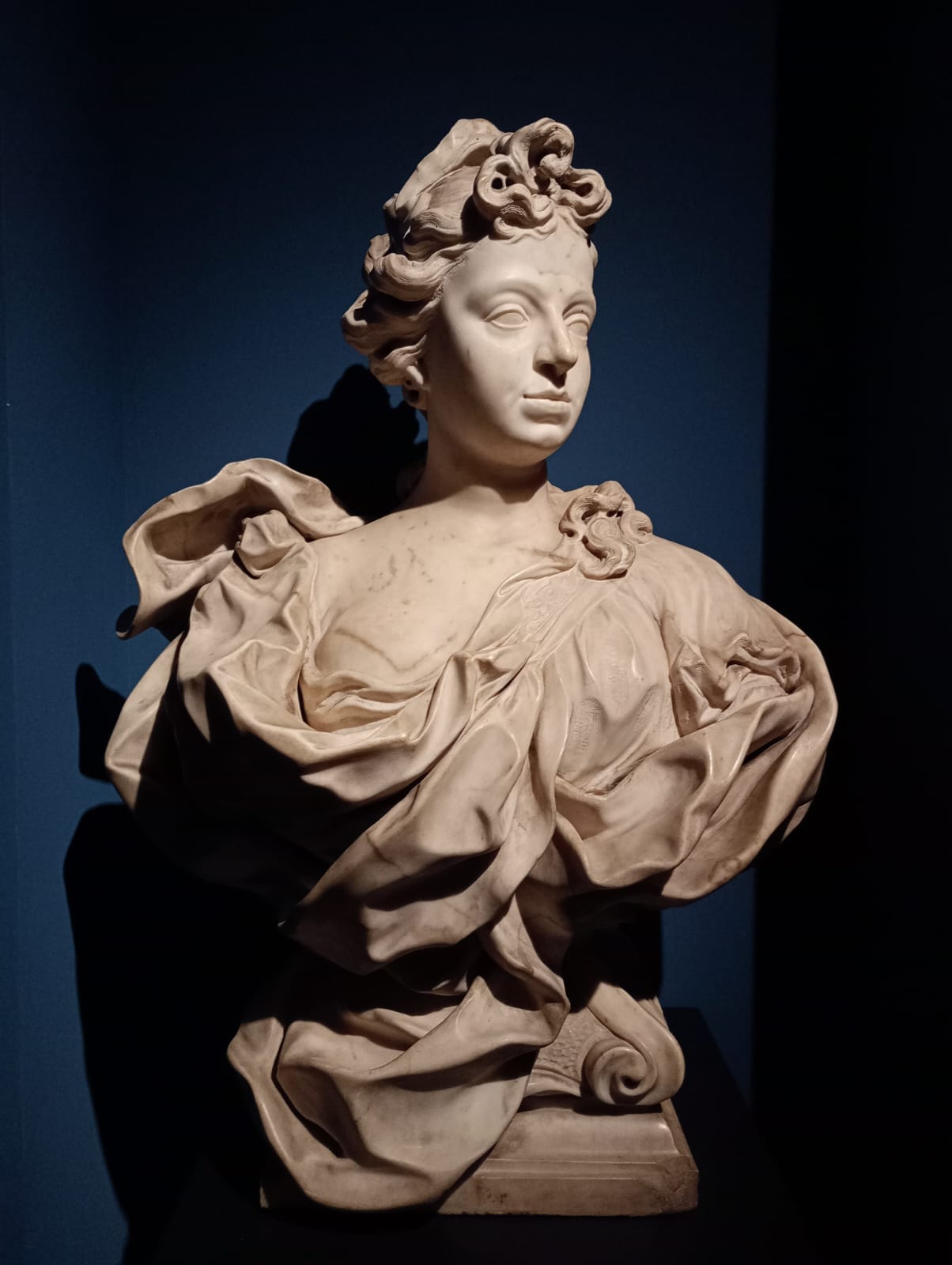
On the other hand, we know with a good margin of certainty that Mulinaretto was credited with bringing Genoese artistic culture beyond the Apennines: this explains a splendid marble portrait of Elisabetta such as the one for which the name of Domenico Parodi from Liguria has been advanced. It is in fact a bust that translates into marble the French portraiture that was fashionable in Genoa in the early eighteenth century: that of Hyacinthe Rigaud and Nicolas de Largillière, the major portraitists of the Genoese patriciate, but it also looks to the sculpture movement of Pierre Puget, another Frenchman who was among the leading artists of Genoa at the time. Parodi executes a portrait of great vividness: the swirling movement of the dress, which vibrates with air and light, almost counterbalances the princess’s steady gaze, only to be taken up in the jerks of the locks that seem as if moved by a light gust of wind. The neck is caught in a slight twist, while the lips are slightly open: elements that further suggest a living, throbbing presence. Symbolizing Elizabeth’s status is the tiara she wears. In modeling the marble, Domenico Parodi, Pigozzi writes further, “knows how to combine a superfine technique with pictorial softness and grace, in a speaking portrait that gives the visual and tactile impression of the imitated materials. Next to the celebratory purpose we must place the persuasive and communicative. It emphasizes the psychological research of the character, his determination and awareness of rank.”
Also contributing to the awareness of one’s rank was the passion for painting mentioned above. This was not merely a pastime for a bored princess (her mother Dorothea Sophia, by the way, also knew how to paint): the practice of painting was considered important in order to get acquainted with art in such a way as to have the necessary familiarity with it to use later when it came to acquiring works for the family collection (it is well known that the Farnese were among the greatest collectors of their time), as well as in thesphere of patronage, which was a fundamental activity for both the Farnese and the Spanish crown, since a careful cultural policy was functional in increasing the prestige of the state, as well as of their own lineage. Elisabetta trained with the Piacenza painter Pietro Antonio Avanzini and with the Flemish Lorenzo Fremont (also known as “Ferramonti” or “Fiamminghino” in Italy), and we are left with a number of paintings of her, all of sacred subjects. For example, the Alberoni College in Piacenza preserves a Mystic Marriage of St. Catherine that Elisabeth painted in 1714: it is a painting that the princess copied from Correggio’s counterpart panel now in the Museo Nazionale di Capodimonte in Naples, and of which she made a gift to Cardinal Giulio Alberoni (which is why it is still in the collection of the college he founded). It is not a particularly brilliant copy, but it demonstrates how Elisabetta knows both drawing and coloring (of great effect, in particular, are the strong chiaroscuro contrasts that are resolved in clear transitions between areas in light and in shadow), revealing remarkable talents if one thinks that painting was certainly not her profession.

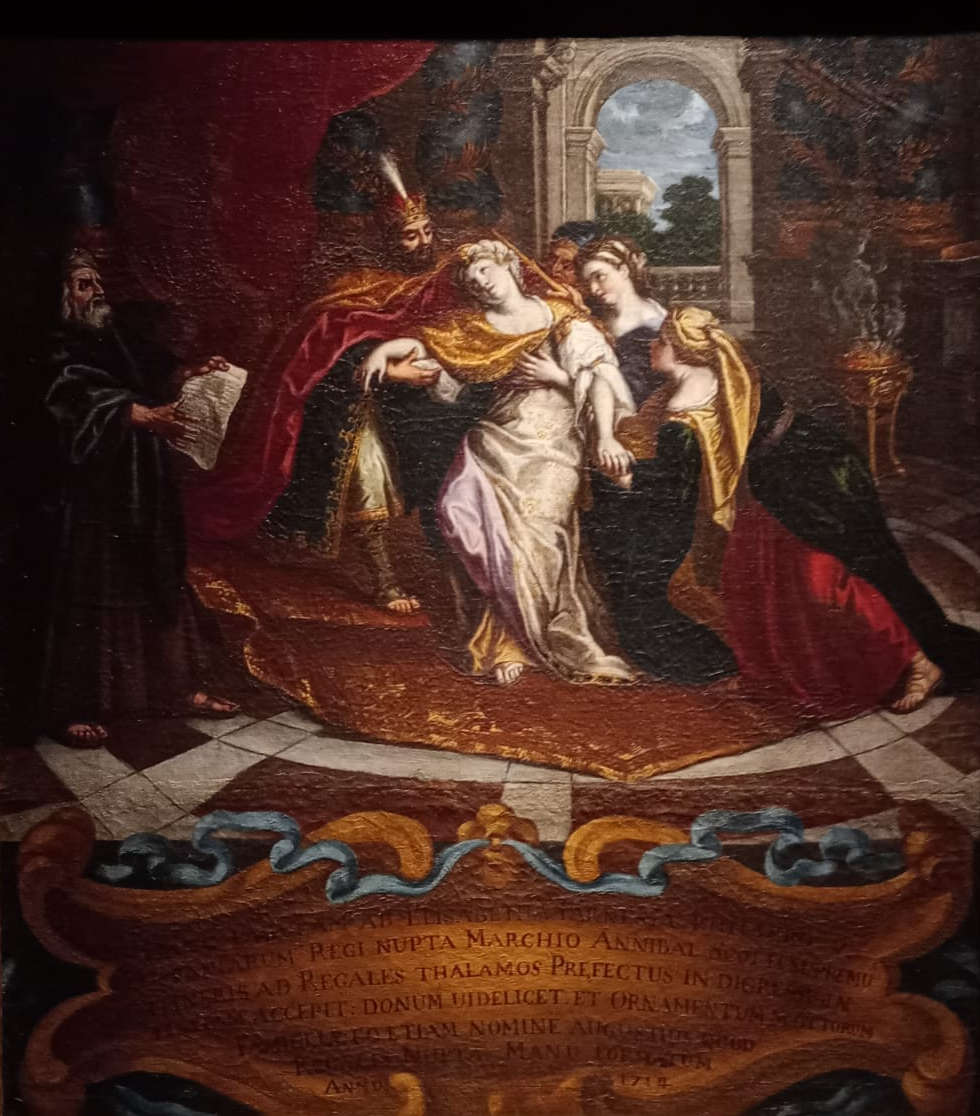
The paintings we know of her were given as gifts: this is so for an Ecce Homo recently traced to a private collection, and it is also so for the Fainting of Esther in the Museo Glauco Lombardi in Parma, also aitself a work from 1714 (it was given to Marquis Annibale Scotti, prefect of ceremonies on the occasion of his marriage by proxy to Philip V, and his escort to Spain), in this case a copy by the French painter Antoine Coypel (the latter’s work is in the Louvre). Elizabeth replicates Coypel’s invention by reflecting it, a sign that she had probably known it through an engraving: it is the biblical episode, taken from the Book of Esther, in which the Jewish heroine, wife of the Persian king Ahasuerus, goes to her husband in order to ask for mercy for her people, who were preparing to be annihilated by the Persians at the suggestion of the adviser Aman. Esther faints for fear that her request would provoke her husband’s wrath: however, the woman succeeds in her intent, saving her people. A much more difficult work than Correggio’s copy, it is resolved by Elisabeth with an obvious simplification of the source, but with a new demonstration of painterly qualities that can be appreciated, in particular, in the perspective setting, in the rendering of the drapery, and in the characters’ expressions: the lower part with the cartouche is not hers, however, and will be added by Marquis Scotti out of gratitude to the princess. Qualities that, moreover, are also recognized by her contemporaries.
“Those who have the good fortune to have some canvas colored by her, esteem it as a treasure, and as such I also regard a small painting... that was given to me,” writes Lorenzo Salvatore Cenami, Lucca’s ambassador to the duchy of Parma and Piacenza. Elisabeth will also paint on the occasion of her journey from Parma to Spain: during a stop in the principality of Monaco, Prince Antonio I Grimaldi saw her at work and had this to say that “elle peint très joliment,” that is, “she paints very happily”, even calling her a “virtuoso” of painting, and leaving a destination of her that has become quite famous (“heart of Lombard, soul of Florentine, knows how to want strongly”).
The interweaving of art and politics was inherent in the action of the Farnese, and Elisabeth must have well introjected this particular characteristic of her family, even going so far as to take it with her to Spain. One more element, then, that contributes to the strategy to establish the princess. A strategy that succeeds in full: with the marriage between Elisabeth Farnese and Philip V of Spain, the dream of Francesco Farnese and Dorothea Sophie of Neuburg came true, and the young woman, as queen, would succeed in making her political weight felt, exerting her very strong influence over her husband’s will, and carving out a leading role for herself in European politics in the mid-eighteenth century.
Warning: the translation into English of the original Italian article was created using automatic tools. We undertake to review all articles, but we do not guarantee the total absence of inaccuracies in the translation due to the program. You can find the original by clicking on the ITA button. If you find any mistake,please contact us.